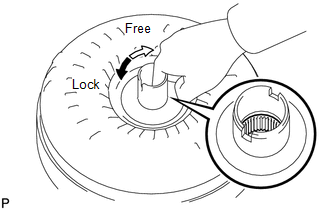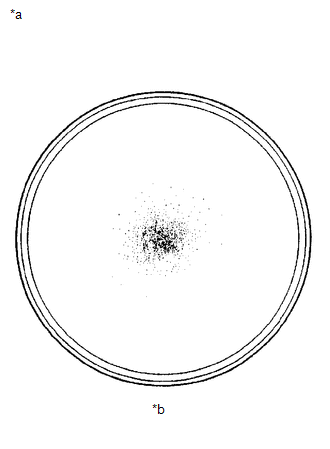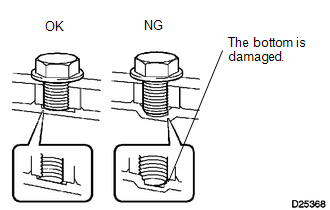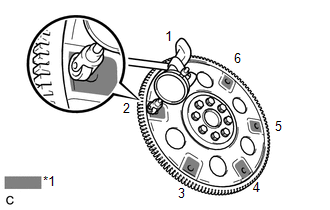Toyota Venza: Torque Converter And Drive Plate
Inspection
INSPECTION
PROCEDURE
1. INSPECT TORQUE CONVERTER ASSEMBLY
(a) Inspect the one-way clutch.
|
(1) Press on the serrations of the stator with a finger and rotate it. Check that it rotates smoothly when turned clockwise and locks when turned counterclockwise. If necessary, clean the converter and recheck the one-way clutch. Replace the converter if the one-way clutch still fails the check. |
|
|
(b) Determine the condition of the torque converter assembly. Text in Illustration
(1) Check that the following conditions are met:
If the results are not as specified, replace the torque converter assembly. HINT: The sample illustration shows approximately 0.25 liters (0.26 US qts, 0.22 Imp. qts) of ATF taken from a removed torque converter. |
|
(c) Replace the ATF in the torque converter.
(1) If the ATF is discolored and/or has foul odor, stir the ATF in the torque converter thoroughly and drain it.
|
(d) Avoid damaging the torque converter and the oil pump gear. (1) When any marks due to interference are found on the end of a bolt for the torque converter or on the bottom of a bolt hole, replace the bolt and torque converter. (2) All of the bolts should be the same length. (3) Make sure that no spring washers are missing. |
|
2. INSPECT DRIVE PLATE
|
(a) Set up a dial indicator and measure the runout of the 6 portions around the torque converter contact surfaces. Text in Illustration
Maximum runout: 0.30 mm (0.0118 in.) |
|
(b) Check the drive plate damage.
If the runout is not within the specification or the drive plate is damaged, replace the drive plate.
 Tcm
Tcm
Components
COMPONENTS
ILLUSTRATION
Removal
REMOVAL
CAUTION / NOTICE / HINT
NOTICE:
If automatic transmission parts are replaced, refer to Parts Replacement Compensation
Table to determi ...
Other materials about Toyota Venza:
Intake Manifold Runner Control Stuck Open (Bank 1) (P2004,P2006)
DESCRIPTION
The tumble control valve is built into the intake manifold. The tumble control
valve is composed of a position sensor and a DC motor. The DC motor opens and closes
the tumble control valve in response to signals from the ECM. The position sens ...
Power Back Door cannot be Operated Using Any Switch
DESCRIPTION
When the power back door cannot be operated using any switch, one of the following
may be the cause: 1) initialization of the power back door ECU (power back door
motor unit), 2) power back door touch sensor circuit, 3) power back door main sw ...
Installation
INSTALLATION
PROCEDURE
1. INSTALL THROTTLE BODY ASSEMBLY
(a) Install a new gasket to the intake manifold.
(b) Install the fuel tube bracket with the bolt.
Torque:
7.5 N·m {76 kgf ...
0.1344





